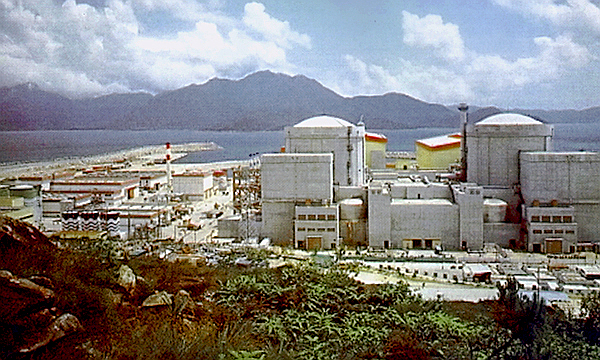Part Two of Two Parts (Please read Part One first)
If the H.K. Fire Department is still able to function after a nuclear disaster, it would institute decontamination procedures. There is a hazardous materials group at the H.K. Fire Department to take care of contamination incidents. All of the satellite fire stations, the airport and the sea ports have received training for dealing with hazardous materials. There are four sub-groups at fire stations in strategic locations which have mass-decontamination and hazmat pod. These pods are special vehicles equipped with detection, protection and decontamination gear. The firefighters with special training can deploy decontamination tents which each have thirty shower heads and hoses to wash contamination off victims.
The survivors of a disaster will need food. That will be the responsibility of the Center for Food Safety which is part of the Food and Environmental Hygiene Department. They will test food supplies to make sure they are not dangerous from being irradiated. However, there is no released plan on how food would be collected and distributed if the disaster was severe enough to disrupt the usual distribution networks.
When the think tank was originally formed in 1998, the danger of a North Korean nuclear warhead was not part of the threat assessment. The possible sources of radioactive materials which were considered in the beginning were devices that could disperse radioactive materials, dirty bombs containing radioactive materials, and a disaster at the Daya Bay nuclear power plant northeast of H.K.. A million H.K. citizens signed a petition against the construction of the plant in 1985.
The Daya Bay nuclear power plant went into operation in 1993. The plant is far enough away from H.K. that danger of fallout in H.K. from a disaster at the plant is very small. Even so, the H.K. government still has emergency procedures in case of a release of radiation from the plant. Citizens are advised to stay indoors and seal doors, windows and air vents to keep out any radioactive materials that might reach H.K. There are also plans for the government to distribute iodine pills to the H.K. citizens to help guard against thyroid cancer.
There are private groups of citizens in H.K. who research plans and techniques for responding to various emergencies. Some in these groups do not have much faith in the government’s plans. A member of the H.K. Survival Association (HKSA) said “Such plans are too simple. The government has no plan in place against nuclear attacks … it doesn’t have sufficient reserve supplies. There is a lot of room for improvement.”
The HKSA does have its own plans for how to respond to a nuclear attack but they consider such an attack to have low probability. The HKSA believes that there is a much greater danger from epidemics. The very high population density of H.K. would make it an ideal place for a disease to spread quickly. The group recommends that all citizens carry a first aid kit, a water bottle and energy bars with them at all times. The HKSA says that “We’re not spreading fear, but promoting the importance of preventing disasters. By promoting awareness of accidents and disasters, and the best way to deal with them, we reduce the burden on rescue workers in emergencies.”
Daya Bay Nuclear Power Plant:
